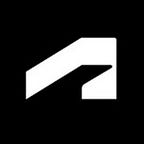Additive Manufacturing in the U.S. Air Force
Building a Better Bomb Squad
Picture this: an Air Force Explosive Ordnance Disposal (EOD) team — the real-life version of the guys from The Hurt Locker — is on deployment in a combat zone. They receive word that a patrol has discovered what could be an explosive device. The EOD team gathers intelligence on the device, decides it’s a genuine threat, and opts to disable it using a triangular-shaped water charge. So they give the order to start warming up the 3D printer. They’ll print their water charge housing to order to complete the mission.
That’s not how it’s done in the field today, but it may be in the future, thanks to the work of a cadet capstone class at the U.S. Air Force Academy (USAFA).
The mass-produced shape charges used today, while effective, are expensive to ship and store, and are as highly regulated as military ordnance. The task of stocking and tracking them at the front lines is an administrative pain point. And they’re heavy to carry in backpacks during a mission.
Lt. Colonel Patrick Suermann, who served as a USAFA Associate Professor of Engineering until 2015 and now helps support continuing cadet research as Chief of Emergency Services & Engineering, says, “These charges are highly regulated supplies, but they’re expendable — they only get used once. By making them as they need them, they don’t have to fly in additional supplies every time one is used. It can save a lot of time, money, and hassle.”
3D Printing Hits the Front Lines
It should come as no surprise that, as 3D printing has rapidly caught on with both hobbyists and commercial industry, it’s also catching on in the military. After all, it has benefits that mass production can’t provide: the ability to iterate rapidly, customize easily, and print to order.
Until now, most additive manufacturing efforts in the Air Force focused on aircraft repair. But that’s beginning to change as teams of engineers explore ways to create better solutions for EOD teams and others on the front lines.
Customizing Your Robot
When an EOD team comes across a potential threat, they don’t usually walk up to it to get a closer look (for obvious reasons) — instead, they send in a robot. A Northrop Grumman Remotec is the most commonly employed EOD robot. Depending on the threat, the Remotec carries in infrared, chemical, radiological, and other sensors to gather data in addition to video footage. But because the robot only has a single arm, these sensors may be sent in individually. And because no bracket is commercially available for the Remotec arm, EOD teams in the field currently attach these sensors using duct tape. While cheap and easy to apply, the duct tape takes time to undo before switching sensors and requires considerable cleaning after the mission is completed.
As part of their civil engineering graduate project at the Air Force Institute of Technology, Lt. Bradford Shields and Ms. Maria Meeks used Autodesk Fusion 360 cloud-based design software to create a better solution. They designed a bracket customized to the Remotec arm that could be used to attach all necessary sensors without requiring low-tech aids. The solution had to provide full range of motion for the arm and full visibility of the robot’s video camera. And not involve duct tape.
After six design iterations, they put their solution to the test in simulated operational conditions. They found that the bracket saved 60 to 90 seconds during each sensor change and, as a bonus, worked equally well for sensors designed to be handheld. According to Suermann, “One of the best parts is that, because it’s something that any team with a 3D printer can make themselves, they can distribute the solution simply by sharing the digital file.”
Air Force DIY
Other USAFA teams of engineering cadets are undertaking similar explorations with additive manufacturing technology. One team is working to create inert replicas of common friendly or enemy explosive devices for training purposes. Another team has completed a set of cards explaining the benefits and limitations of 3D printing for distribution to other engineering teams as well as local schools.
“Each of these projects are in their infancy and have yet to see widespread adoption,” Suermann says. “But they’re just the beginning. With the way design technology is advancing so rapidly, we have the opportunity to find new and better solutions than were not possible in the past. As an engineer in the Air Force, that makes it an exciting time to serve.”
This story first appeared in DEVELOP3D. Learn more about additive manufacturing at AU online.
